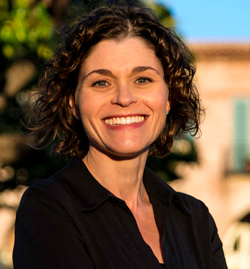Last Updated on June 26, 2022 by Laura Turner
Over a decade ago, I was seated in the emergency department with a colleague when I inquired about another one of our physician co-workers I’d not seen in a while. “Oh, she’s on the Mommy Track,” my colleague said and picked up another chart, without giving his words a second thought. To me, selecting a career path that sacrificed career advancement for more time to raise children was legitimate. My colleague’s pejorative “Mommy Track” made it clear that to him, it was not.
At that sad moment, I resolved to pursue a non-clinical supplement to my emergency department work, colloquially known as an “exit strategy.”
Emergency medicine is a fantastic field in many ways: daily work includes critical thinking, procedures, interpersonal interactions, and the ability to make a positive impact when a patient is most vulnerable. But the field also has one of the highest burnout rates. One of the problems is the erratic schedule; shift work has been associated with health problems, including an increased risk of heart disease, depression, diabetes, and breast cancer. Additionally, there is often a lack of autonomy and control in the field. Usually, an emergency physician doesn’t pick whom she works with, whom she treats, how heavy her workload is, or how burdensome the emotional toll of her workday might be.
For most medical students, a lack of autonomy is not the first worry on their minds. They have little control to begin with. Furthermore, it may be hard for someone in their early 20s to envision what a future medical practice should look like to maximize individual happiness and self-determination. But years later those erratic hours and lack of autonomy become relevant: spouses and children, community activities, parent illnesses, and other unforeseeable but entirely probable conflicts render the clinical hours less attractive. And this is not only true for emergency medicine. Many otherwise great medical specialties have onerous disadvantages that limit flexibility, autonomy, creativity, physical well-being, and personal time.
I did not possess this insight as a medical student. But I did know that medical school was making me feel unidimensional and narrow, so I availed myself of Harvard’s “five-year plan,” allowing me to graduate one year later with a nominal tuition difference. I spent time backpacking through Thailand, Mexico, Guatemala, and Honduras and—fortunately—discovered the American Association for the Advancement of Science Mass Media Science and Engineering Fellowship. Through this program, while working at The Oregonian newspaper in Portland, I learned the fundaments of writing about science for the lay press. I loved journalism, but I opted to pursue my clinical training and matriculated into my residency program the next year.
After completing training, I was asked to stay on as faculty and was later selected as the Assistant Residency Director of the Harvard Affiliated Emergency Medicine Program. My favorite part of being on faculty was the residents. I liked supporting them and, simultaneously, in my assistant residency director role, I learned invaluable information about the residency admissions process, reviewing ERAS documents, interviewing candidates, and helping to select years of residents.
When I met my husband, who is also an emergency physician, we happily relocated to California. I can still recall the day I realized things were going to need to change: as I drove home after a shift one afternoon, I found myself staring across a red light at my husband, who was driving in to start his overnight shift. As we faced one another across the intersection in our respective cars, waving as we departed in opposite directions, I immediately understood that we were not going to be able to sustain two full-time clinical careers if we intended to see each other regularly and start a family. His practice did not allow part-timers, so I needed to consider how to achieve more flexibility and autonomy in order to allocate my time according to our shared priorities.
I considered what I wanted and what my skill set was:
- I really missed mentoring residents and medical students, as I had done in Boston before I left academia. My love for advising doctors-in-training was generously reciprocated when I received a Mentor of the Year Award from the residents.
- I also really loved the work I had done as a journalist and missed focusing on words and their impact.
- I had a lot of experience interviewing applicants and understood what went on behind the closed doors of the residency application process.
- Finally, I wanted to be able to work from home, the library, or even the YMCA, so I had the flexibility to spend maximum time with my husband and family.
In the winter of 2007 I founded Insider Medical Admissions. Throughout Insider’s growth, I have continued to work clinically part-time, a strategy I would recommend to any physician considering a non-clinical track unless or until she is certain she will never see another patient again. Years ago, I was given good advice to “keep an oar in the water” of clinical practice. Although I have one stellar medical school friend who was able to go back to clinical work after being out while raising her children, doing so is extremely challenging. Furthermore, clinical work offers satisfaction and challenges complementary to those I enjoy with my consulting business.
When considering your future, it’s critical to remember that non-clinical pathways are not the perfect answer. Insider Medical Admissions works very well for me, but it has required thousands of hours of my time. My husband jokingly refers to Insider as our third child for all the attention it has demanded. Also, while clinical work can be exhausting and can leave some doctors with a lack of flexibility, it is usually geographically and financially secure. I have friends and acquaintances who travel weekly for their work, have been required to relocate to less desirable locations, or have simply been let go without warning. Others must live apart from their spouses for work and earn a low income for hard labor. All of these are issues a doctor must grapple with when considering non-clinical paths.
By creating a clinical alternative tailored to my situation, I am able to enjoy many of the aspects that replenished me as a Harvard Assistant Residency Director without the drawbacks or politics of an academic career. Thinking outside the box as an entrepreneur allowed me to renegotiate the impositions I was willing to accept from my clinical work. It’s liberating when you no longer face the constraints that entrap many colleagues in clinical medicine. It’s also empowering to find that, thanks to a supplemental income stream, you can reduce or eliminate the more depleting aspects of your job. One of several secrets to longevity in Emergency Medicine is the ability to reduce one’s night and weekend shift loads. Thanks to years of cultivating my work at Insider, I can do just that.
My advice for the newly-minted physician is to create a list of your skills and decide which ones confer an advantage that you might use to create an opportunity and generate a supplemental revenue stream. If you can’t identify your niche skill, invest early in developing additional talents and expand your network. You might volunteer on hospital committees that allow you to become a known and respected quantity to the administration. Alternately, developing research or financial skills may allow you to branch out into pharmaceutical work or venture capital. A golden parachute is woven slowly and deliberately, one stitch at a time. Start creating one before it’s needed to allow yourself a graceful, planned exit at the altitude of your choosing instead of waiting until everyone else is desperate to exit a crashing plane.


